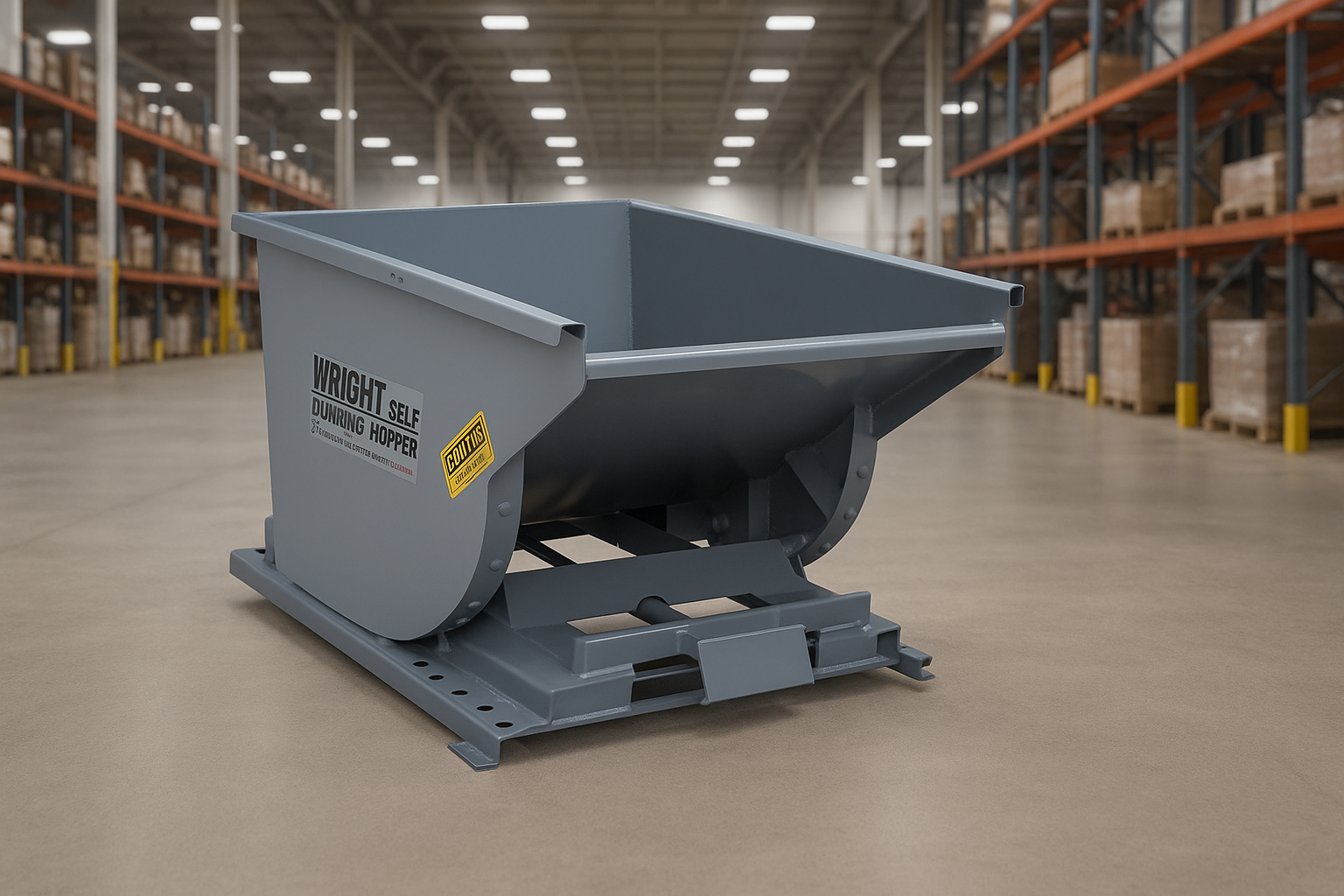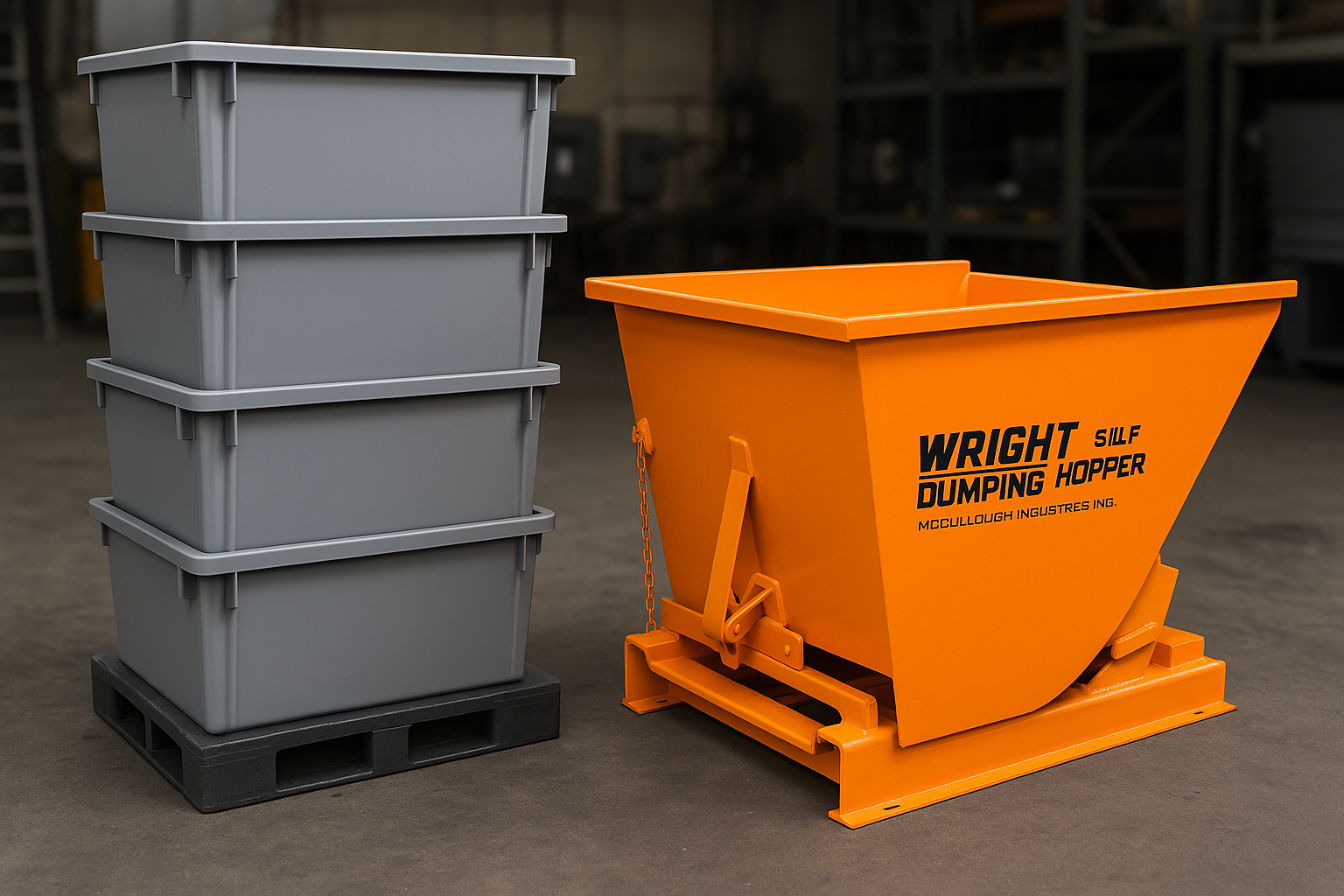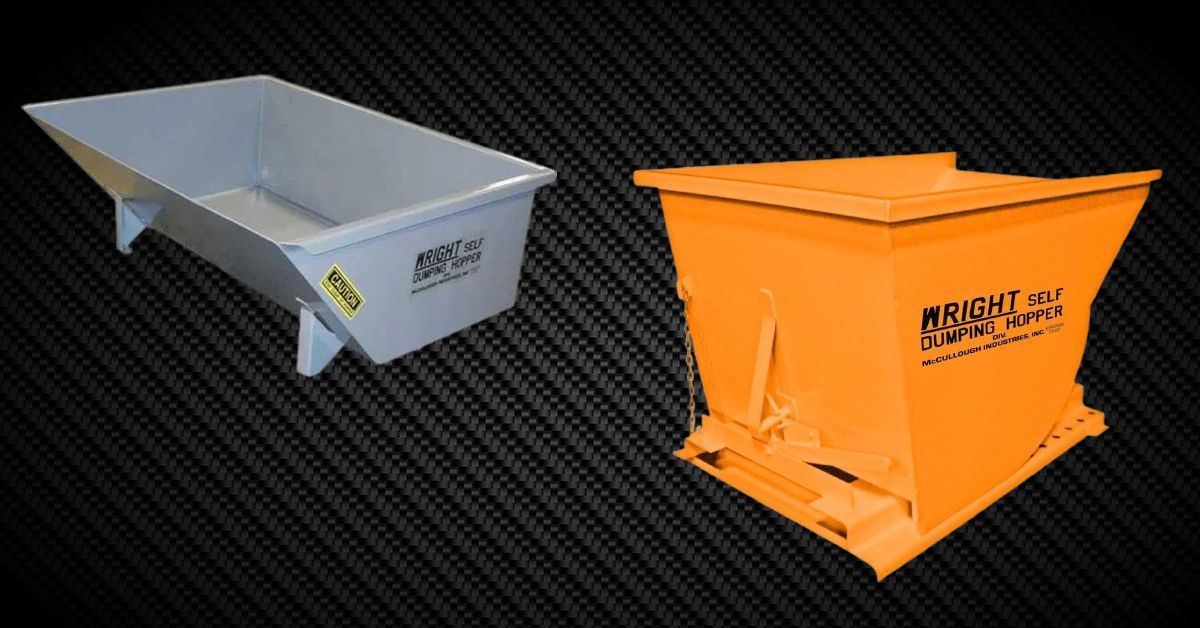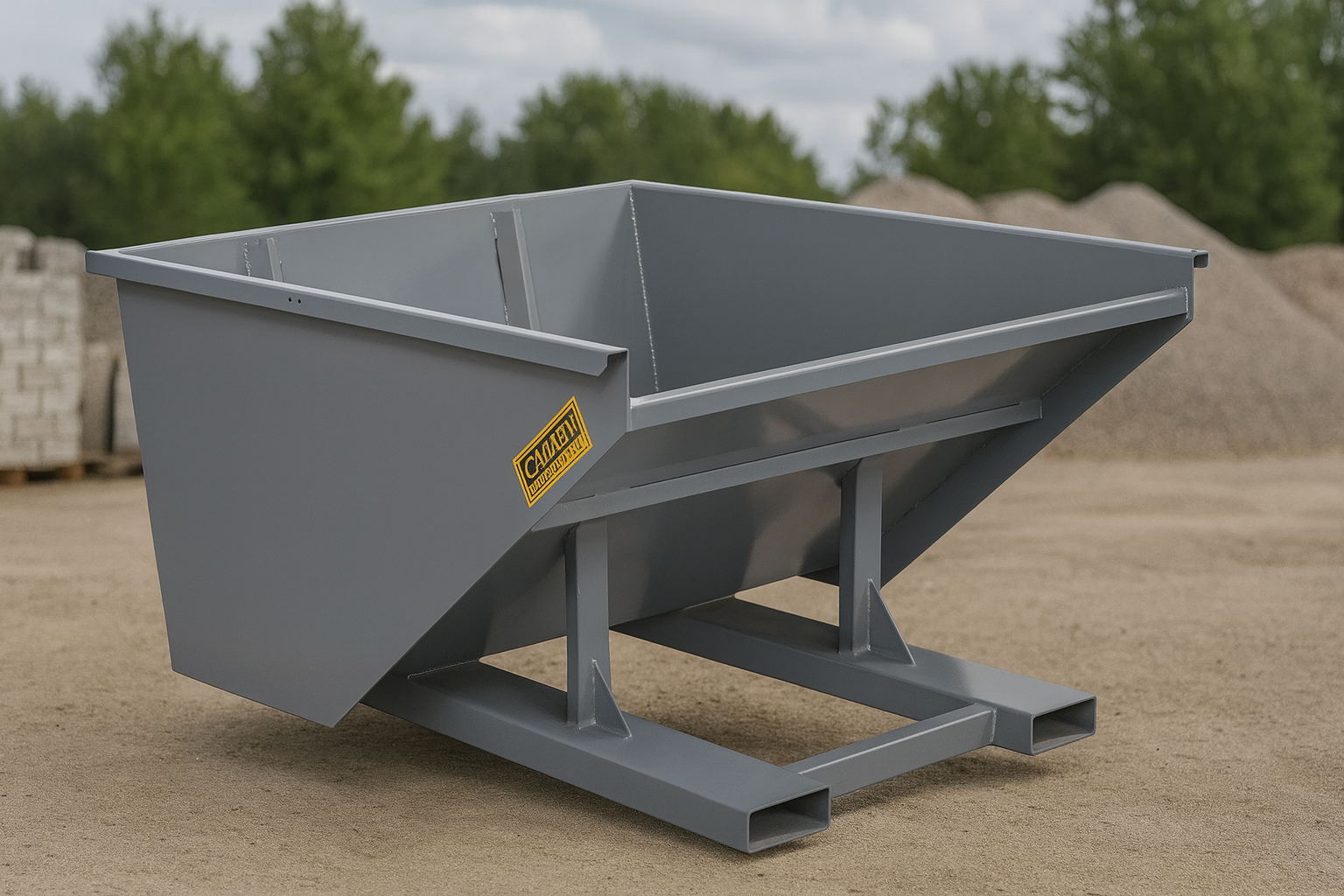
Why Dump Angle Design Matters
In industrial environments where speed, safety, and efficiency matter, the dump angle of a self-dumping hopper isn't just a technical detail, it's a performance driver. At McCullough Industries, every Wright® Self-Dumping Hopper is engineered with a carefully calculated dump angle that supports clean material flow, minimizes risk, and helps operators work faster.
But what is a "dump angle" exactly? And how does it impact your day-to-day operations? In this guide, we break down the key considerations and offer a side-by-side comparison to help you choose the right design for your application.
What Is a Dump Angle in a Hopper?
The dump angle is the maximum degree of tilt a hopper reaches when unloading material. It influences how quickly and completely the load exits the container. A shallow angle may leave debris behind or require manual clearing. A steeper angle encourages a full dump but may require more stabilization or space.
Common Dump Angles in Wright® Hoppers
Most McCullough hoppers are engineered with dump angles between 30° and 60°, depending on the model and use case:
| Hopper Model | Typical Dump Angle | Best For |
|---|---|---|
| GEN II Hoppers | 38°–45° | General-purpose material handling |
| Low Profile Hoppers | 35°–40° | Under-table or conveyor-line use |
| Bump Release Hoppers | 50°–60° | Roll-off container dumping, fast cycling |
| Quick Attach Hoppers | 40°–50° | Loader applications, field use |
| Stackable Rotating Totes | Varies w/ rotator | Compact environments, rotator compatible |
How Dump Angle Affects Your Workflow
Material Type and Flow
Sticky or dense materials (wet chips, fine powders, construction debris) often need a steeper dump angle to flow out completely. Lighter materials like packaging scrap or dry shavings may work well with shallower angles.
Space Constraints
Higher angles may require more forward clearance during tipping. Low-ceiling environments or tight workspaces may benefit from hoppers with controlled, shallower dump angles.
Dumping Frequency
In operations where hoppers are dumped multiple times per shift, automatic reset mechanisms paired with optimal dump angles reduce cycle time and manual effort.
Operator Safety
Controlled dump angles paired with positive stops and safety latches help minimize material splash or sudden drops, keeping forklift operators safe.
Wright® Dump Angle Engineering: Built for Performance
McCullough doesn't use guesswork. Each Wright® hopper is designed with a balance of dump angle, wall height, and structural pivot points to ensure a safe, repeatable dump. Common features include:
- Positive stop angles to prevent over-rotation
- Balanced pivot points that reduce forklift strain
- Self-latching return for hands-off reloading
Applications That Depend on the Right Dump Angle
- Fabrication & Machining: Fine metal shavings often cling to container walls. A steeper dump angle helps clear the load without manual scraping.
- Recycling Facilities: When handling mixed or sticky waste, a strong tilt ensures faster turnaround and less residue.
- Outdoor or Sloped Environments: Controlled dumping angles reduce shift or spill risk when working on uneven ground.
- Roll-Off Container Transfer: Bump Release Hoppers use aggressive dump angles to unload completely and return upright automatically.
Dump Angle Comparison Table
| Model Type | Dump Angle | Manual Reset? | Ideal Use Case |
|---|---|---|---|
| GEN II | 38°–45° | No | General material handling |
| Low Profile | 35°–40° | No | Tight vertical space |
| Bump Release | 50°–60° | No | High-speed dumping into roll-offs |
| Quick Attach | 40°–50° | No | Outdoor loader operations |
| Stackable Rotating Tote | Varies | Via rotator | Lean setups with tight footprints |
Signs Your Hopper Dump Angle Needs to Be Reconsidered
- Residual materials remain after dumping
- Operators need to manually clear debris
- Excessive forklift tilt required to initiate dump
- Safety issues with material splash or tipping
If any of these apply, it may be time to review your current hopper model and see if an adjustment to dump angle could improve performance.
FAQs: Hopper Dump Angles
What is the best dump angle for general use?
For general-purpose use, a 38° to 45° dump angle offers a good balance of complete emptying and safe operation.
Can I change the dump angle on an existing hopper?
Not easily. Dump angle is determined by the frame design and pivot point. However, McCullough can custom-build hoppers to your preferred angle.
Is a higher dump angle always better?
Not necessarily. High angles may increase the risk of tipping or require more space. The right angle depends on material type, volume, and dumping environment.
Do all McCullough hoppers have the same dump angle?
No. Each hopper line is engineered with a unique angle to match its intended use case, ensuring best-in-class performance.
Let’s Build the Right Hopper for Your Dumping Cycle
Dump angle might seem like a small spec, but it can affect everything from material flow to worker safety. McCullough Industries engineers every Wright® Self-Dumping Hopper with optimal tilt geometry, so you can work faster, cleaner, and safer. Contact us today to spec the right model for your facility.






